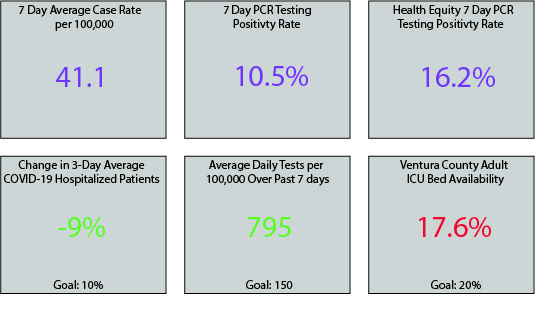COVID-19 cases decline statewide

Gov. Gavin Newsom lifted the stay-at-home order that Californians have been living under for over a month on Jan. 25, after the state projected that ICU capacity would rise above 15% across the state within the next month. Over the past week, the state has averaged 13,327 cases per day, a 50.8% decrease from the previous two weeks. Although the number of California’s new cases have been decreasing, Ventura County currently has the fifth highest number of new cases per 100,000 people across the state.
While the stay-at-home order is no longer effective, a majority of the counties continue to remain in the purple tier in the state’s color-coded tier system. Although the purple tier is less restrictive than the stay-at-home order, it still requires non-essential businesses to close and restaurants to serve outdoors only.
Although the daily number of new positive cases in California is decreasing, the rate is still higher than it was in November when the second spike began. The rate at which vaccine doses have been administered has been increasing as well. As of Feb. 11, 5.3 million people, including healthcare workers, long term care residents and individuals 65 and older are currently being vaccinated. The next group of individuals who are to be vaccinated include those at risk of exposure in their field of work.
As of Feb. 11, there have been a total of 74,218 cases of COVID-19 in Ventura County, of which 169 were reported on Feb. 11. There have been a total of 714 deaths in Ventura County, of which 18 were reported on Feb. 11.
There have been 13,342 second doses of the vaccine given and 52,925 first doses received in Ventura County out of a total of 846,006 people.
In order for high schools to begin reopening, Ventura County must be in the red tier for at least five consecutive days. The current seven day average case rate per 100,000 people is 41.1, short of the red tier threshold of less than 7. The 7 day testing positivity rate is 10.5 percent, greater than the county’s goal of less than 8 percent. The health equity 7 day testing positivity rate, which measures the rate at which tests come back positive in disadvantaged neighborhoods, is 16.2 percent, which is double the goal of less than 8 percent.


